A brief history of East Turkestan and Chinese occupation
By Abdugheni Sabit

A brief history of East Turkestan and Uyghurs
East Turkestan is a large, sparsely populated area, covering 1. 6 million km². It accounts for more than one sixth of China's total territory and a quarter of its boundary length. Located in Central Asia, it is bordered by Russia in the north, Kazakhstan, Kyrgyzstan and Tajikistan to the west, Afghanistan to the southwest, Pakistan, India and Tibet to the south, China to the east and Mongolia to the northeast.
The name “Turkestan” is Iranian in origin, meaning “land of the Turkic peoples” and dates back to the 5th century. The western part of Turkestan was gradually conquered by the Tsarist Russia in 1865, after which it became known as Western Turkestan. After the formation of the Soviet Union in 1924, the Western Turkestan was divided into five republics: Uzbekistan, Kazakhstan, Kyrgyzstan, Turkmenistan and Tajikistan.
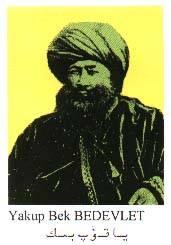
Muhammad Yakub Beg ( Rahimahullah ) Amir of Kingdom of Kashgaria
The eastern part of Turkestan had been invaded by the Manchu rulers of China in 1876, After eight years of bloody war, the Manchu empire formally annexed East Turkestan into its territories and renamed it “Xinjiang” (meaning “New Territory”) on November 18, 1884.
After Chinese Nationalists overthrew the Manchu Empire in 1911, East Turkestan fell under the rule of warlords of Chinese ethnicity who came to dominate provincial administration in the later years of Manchu Empire. The Chinese central government had little control over East Turkestan at this period. The Uyghurs, who wanted to free themselves from foreign domination, staged numerous uprisings against Chinese rule, and twice (once in 1933 and 1944) succeeded in setting up an independent East Turkestan Republic (ETR). However, these independent republics were overthrown by the military intervention and political intrigue of the Soviet Union.
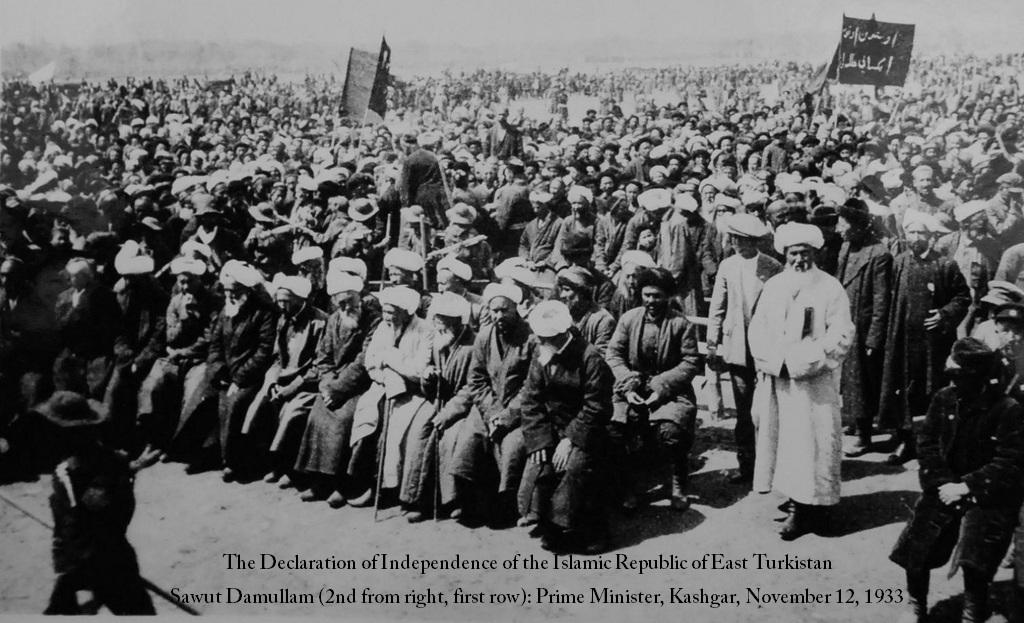
In October of 1949, the Chinese troops (People’s Liberation Army) invaded East Turkestan Republic. The communist China defeated the East Turkestan fighters after encountering six years of fierce resistance and formally annexed East Turkestan into its territories and renamed it “Xinjiang. On October 1, 1955 declared Xinjiang Uyghur Autonomous Region of China.

Although East Turkestan is called “Xinjiang Uyghur Autonomous Region” there is no self-rule or self-government for the Uyghurs. More than 90 percent of all important political, administrative and economic bodies in East Turkestan are occupied by Chinese employees.
The Chinese communist reign in East Turkestan can be considered the darkest chapters in the history of Uyghurs and East Turkestan. Under the current conditions, the very existence of Uyghur nation is under threat. The Chinese communist government has been carrying out a vicious campaign against Uyghurs and other indigenous people of East Turkestan in order to permanently annex the lands of East Turkestan.
Despite all the brutal and destructive campaigns by the Chinese government against the identity and existence, the Uyghurs and other indigenous people of East Turkestan refuse to be subjugated by China and are carrying on resistance torch, handed down to them by their ancestors, against Chinese occupation.
Approximately over 20 million Uyghurs live in East Turkestan. The Uyghur language is mother language of Uyghurs. Today, the Uyghur Arabic alphabet is the official writing system used for Uyghur in East Turkestan. The Uyghurs are Sunni Muslim and majority in East Turkestan (so - called Xinjiang Uyghur Autonomous Region of China).
Timeline for Chinese government’s genocidal policy after Chinese occupation of East Turkestan in 1949
The Chinese government has invaded East Turkestan since on October 13, 1949.
On January 30, 1950, Abdualla Hakim and Saydulla organized the Uyghur people in Araturuk ( in Chinese Yiwu ) county of Kumul ( in Chinese Hami ) Prefecture in East Turkestan and established an “Anti- Occupation Group” and fought against Chinese invaders. During the battle, more than 500 Uyghur people died. During the same period, a Kazakh man called Kalbeg led a few thousand Uyghur and Kazakh fighters and fought against the Chinese invaders, at result more than 2,000 Uyghur and Kazakh fighters died.
In April 1950, around 20,000 people protested in Kumul (“Hami” in Chinese) Prefecture in East Turkestan under the leadership of Osman Batur against the Chinese occupation. The protest turned into a guerrilla war that lasted more than two years and resulted in thousands of deaths.
In February 1951, Shirdiman Osman, the son of Osman Batur, carried on his father’s mission and fought against Chinese invaders.
In 1951, a number of intellectuals in Ghulja (“Yining” in Chinese) Prefecture in East Turkestan secretly founded an organization named the “Fifty –one Association”. The mission of the association was to liberate East Turkestan from the Chinese occupation. Later, the Chinese government secretly arrested a handful of Association members.
In 1953, a number of acts of resistance took place throughout in East Turkestan.
The Chinese government sent Chinese General Wang Zhen to crack down on the fighters in East Turkestan. Wang Zhen arrested, tortured and executed the thousands of fighters including intellectuals and religious scholars such as Chenggizkhan Damolla, Asadulla Damolla and Abdulaziz Mahsum. (Damolla is a term meaning a man who studied Islam for several years under the supervision of religious scholars).
In December 1954, Abdulhamid Damolla and Pathidin Mahsum founded an organization called “East Turkistan Islamic Liberation Party” in Atchoy village, Hotan (“Hetian” in Chinese) Prefecture of East Turkestan.
They attacked Chinese soldiers, took over the Atchoy Prison and freed some Uyghur prisoners at Atchoy Prison. The fighters began an offensive to force the surrender of Hotan city but they were sold out by a traitor and the Chinese government cracked down on the fighters.
In March, 1956, Baki Damolla and Samad Damolla led a group Uyghurs in Karakash County of Hotan Prefecture against the Chinese ruling East Turkistan. During the resistance, more than 800 Uyghurs were killed by the soldiers of the “Chinese Construction and Production Group” (“Bingtuan” in Chinese).
In May 1956 Abdukadir led more than 1,300 Uyghur activists in Lop County of Hotan Prefecture of East Turkestan a protest against the Chinese regime but the demonstrators faced a brutal crackdown by the Chinese government.
In 1957, the Uyghur Calvary Division in Urumqi and Ulanbay began organizing a protest against the Chinese government. However, their activities were discovered by the Chinese. The Chinese government arrested, tortured and executed all the soldiers ( who were former soldiers of the East Turkistan republic ) and officers.
In 1957, a Uyghur woman named Hajidihan ( Khadijah ) in Han Erik village of Hotan prefecture organized a protest against Chinese rule. The Chinese invaders arrested all protestors and executed Hajidihan.
In 1958, Baki Damolla and Samat Damolla led farmers in Hotan city of Hotan prefecture in East Turkestan protest against the Chinese occupation.
In September 1958, Jamishkan and Dalilihan organized protests in the region of Altay (“Alatay” in Chinese), including the provinces of Koktukay, Chinggel and Bashballik (the population in these regions are mainly Kazakhs and Uyghurs). However, the Chinese government brutally cracked down on the protestors.
In October 1958, Ali Kurban and Sheikh Saeed organized a protest in Kumul prefecture of East Turkestan. More than 7,000 people participated in the protest and they faced brutal oppression by the Chinese government.
In 1959, over 24,000 thousand Uyghur people died from starvation in the counties of Bay and Tokhsun in Aksu Prefecture as a result of the Chinese government’s so- called “collective” policy.
In 1962, over 10,000 Uyghur people died from starvation in Payziwat County of Kashgar Prefecture , East Turkestan.
In 1962, Tursun Hapiz organized people to protest against Chinese rule; however, the Chinese government discovered them and cracked down on them.
In 1969, “East Turkestan People’s Party” launched a protest against Chinese rule. However, the protest was discovered by the Chinese government through their spies and faced retaliation by the Chinese government. Over 32,000 “East Turkestan People’s party” members were arrested, tortured, some of them sentenced to long terms prison and others executed by the Chinese government.
Later in the same year, some of the leaders of the “East Turkestan People’s Party” fought against the Chinese soldiers in at Taklamakan desert (southern part of East Turkistan ) and died ( were martyred) during the fight.
In 1980, the Chinese government executed a Uyghur writer, Abdulhamid Mahsud who criticised the Chinese government’s crimes in his writing. Because of that, thousands of Uyghur people in Urumqi protested peacefully against the Chinese government by carrying the writer’s body around streets in Urumqi and demanding justice.
On May 27, 1981, over 200 “East Turkestan fighters” attacked the Chinese Public Security Bureau (“PSB”) in Payziwat County of Kashgar Prefecture and seized some weapons. However, they were betrayed and surrounded by the PSB and executed.
On December 12, 1985, university and college students took to the streets of Urumqi and protested against the Chinese rule. Later on, the protest spread all over East Turkestan such as Kashgar, Aksu, Hotan and Boratala, resulting in more than 15,000 students taking part.
The protesters made the following demands of the Chinese government:
(1) Implementing democratic elections/voting rights
(2) Halting nuclear atom bomb tests
(3) Ending the dispatch of Chinese migrant workers into East Turkestan
(4) Implementing genuine autonomy in East Turkistan (so called Xinjiang Uyghur Autonomous region).
(5) Halting “Family Planning Policy” for the Muslims in East Turkestan
(6) Developing ethnic education.
On June 15, 1988, Uyghur university and college students held a meeting in Urumqi to discuss the Chinese government’s discriminatory policies towards ethnic people in East Turkestan. Following the meeting, over 4,000 students took to the streets of Urumqi and protested against the Chinese regime.
During April and May of 1989, Chinese university and college students called for more democracy in China. The Uyghur university and college students in Urumqi followed the footsteps of the Chinese student democrats and protested against the Chinese government.
On May 18, 1989, students from “Xinjiang Islamic Institute” in Urumqi city of East Turkestan protested against a book called “sex and tradition.” The book was written and published by a Chinese writer with the support of the Chinese government. Its aim was to change Muslim etiquette's and Uyghur traditions by insulting Islamic beliefs, Uyghur traditions and their practice of sex. The Chinese government arrested over 300 peaceful protestors.
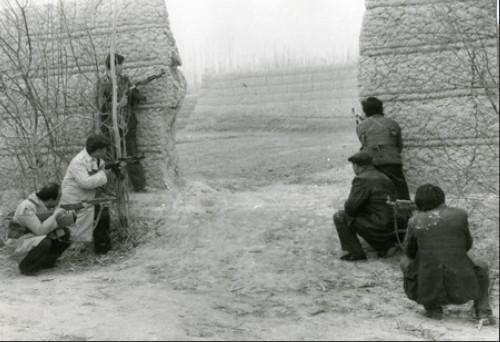
Chinese soldiers shooting unarmed Uyghur protesters
On May 4, 1990, Sheikh Zaydun Yusup led hundreds of farmers in Baren Township of Akto County in Kashgar Prefecture in a protest against the Chinese. However, as the Chinese government brutally cracked down on the farmers, they were forced to defend themselves. They took the Chinese soldiers’ weapons and fought against the Chinese troops. The battle lasted several days and resulted in hundreds of death. Later, Chinese government troops terrorized entire villages by killing and arresting Uyghur people indiscriminately.

Chinese government troops terrorized entire villages by killing and arresting Uyghur people indiscriminately.
In 1995, the Chinese government abducted Ablet Mahsum, a respected Uyghur Muslim scholar, in Hotan City of Hotan Prefecture of East Turkestan once again causing the Uyghur people to rise up in protest against the Chinese rule. Later, the Chinese government brutally cracked down the peaceful protestors.
On February 9, 1996, Ahmatjan Hamut led other Uyghurs in Onsu County of Aksu Prefecture in East Turkestan resistance against the oppressive Chinese regime. The government brutally cracked down on Uyghurs, killing some of the protestors and burying the dead bodies near the Taklamakan desert by Tarim Road.
On February 5th, 1997, over 1,000 Uyghur people took to the streets of Ghulja City (“Yining” in Chinese) to protest against the Chinese government’s oppressive policies in East Turkestan. Chinese police open fire on the protestors, killing 560 people. Later, Chinese government interrogated approximately 75,000 Uyghur civilians and sentenced over 4,000 Uyghur people to prison terms.

Uyghurs protest against the Chinese government’s oppressive policies in East Turkestan
Video :
In 1998, a clash occurred between Uyghur fighters (led by Sheikh Imin Hashim ) and Chinese police on Karatagh mountain in Aksu Prefecture. The police killed Imin Hashim including 9 of his fellow fighters and put the rest of them in prison.
Since September 11, 2001, the Chinese government has taken advantage of 9/11 and the “global war on terror” to intensify its repression and crackdown on the Uyghur people. The Chinese government has openly executed thousands of Uyghur people and imprisoned tens of thousands of peaceful activists.
In 2002, the Chinese government implemented an assimilation policy in East Turkestan by eliminating Uyghur education in universities and colleges. As a result, thousands of Uyghur people lost their jobs to Chinese immigrants. Meanwhile, the government openly accused peaceful Uyghurs who opposed China’s policies in East Turkestan (so called Xinjiang Uyghur Autonomous region).
Chinese government tried to hide their atrocities and justified their unlawful action under the guise of the “international war and terror“. That so-called war and terror gave the Chinese government a golden opportunity to slander Uyghur Muslims over supposed links to “terrorism”, “separatism”, and “religious extremism“. As a result, the Chinese arbitrarily arrested and imprisoned one hundred thousand Uyghurs including intellectuals, Businessmen, religious scholars, students and farmers.
In 2003, the Chinese government implemented a system of “bilingual education” (Uyghur – Chinese language) in primary and middle schools across East Turkestan. As a result, thousands of Uyghur teachers lost their jobs due to not being “proficient” in Chinese language. This “bilingual” education is viewed by the Uyghur people as “brain washing”.
Starting in 2004, the Chinese government has forcefully transferred thousands of young Uyghur girls aged between 16 and 25 to “inner land China” (outside of East Turkestan) from East Turkestan, using them as cheap labourers. Of those Uyghur girls, many have committed suicide or been forced into prostitution after being sexually assaulted by their Chinese bosses.
In 2005, the Chinese government introduced a new policy called “urbanization and modernization” in East Turkestan. With this policy, the government has bulldozed and torn down many traditional Uyghur homes and ancient towns in the Uyghur area of East Turkestan, leaving them homeless. They have built new, Chinese-style homes and used them to house millions of Chinese migrants.
Starting in 2006, the Chinese government has transferred thousands of young Uyghur men to “inner land China” as cheap labour. The Chinese government imprisoned the ones who refused to go and accused them of being “terrorists,” and “separatists”.
During 2007 and 2008, the Chinese government tightened its policy in East Turkestan due to the 2008 Olympic Games. The government cracked down on Uyghur people whenever they could, using the pretext of “ensuring social stability”. They arbitrarily arrested and imprisoned Uyghur people who did not have any connections to terrorist organizations and did not cause any troubles to the Chinese government.
On March 23 2008, hundreds of Uyghur women in Hotan Prefecture protested against Chinese rule and the government’s unfair and oppressive policies.
Later, on August 4, 2008, Chinese police clashed with some Uyghur fighters in Kashgar City and Kuqa City causing some explosions and deaths.
On June 25, 2009, more than 10,000 Chinese police and soldiers dressed in factory work uniforms attacked 800 Uyghur workers in a factory located in Shao Guan City, Guangdong Province. Over 100 Uyghur workers were killed in the attack.
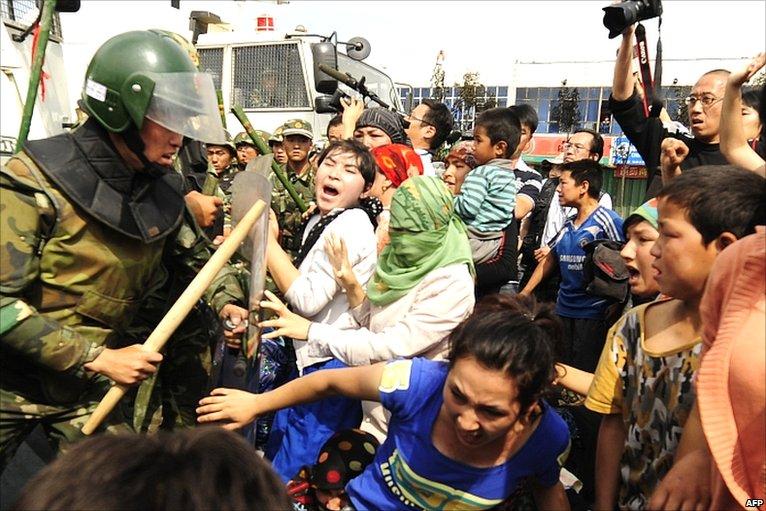
Uyghurs peacefully protested against the “Shao Guan” killings.
On July 5, 2009, over 1,000 Uyghur university and college students gathered around the “People’s Square” in Urumqi, the capital of East Turkestan and peacefully protested against the “Shao Guan” killings.
The protestors called on the government to bring those killers to justice. Instead of resolving their requests, the Chinese government sent thousands of fully armed police units (including riot and paramilitary police) and armoured vehicles and ordered them to shoot the unarmed protestors. According to available Uyghur sources, the Chinese government killed over 3,000 Uyghur people and arrested over 10,000.
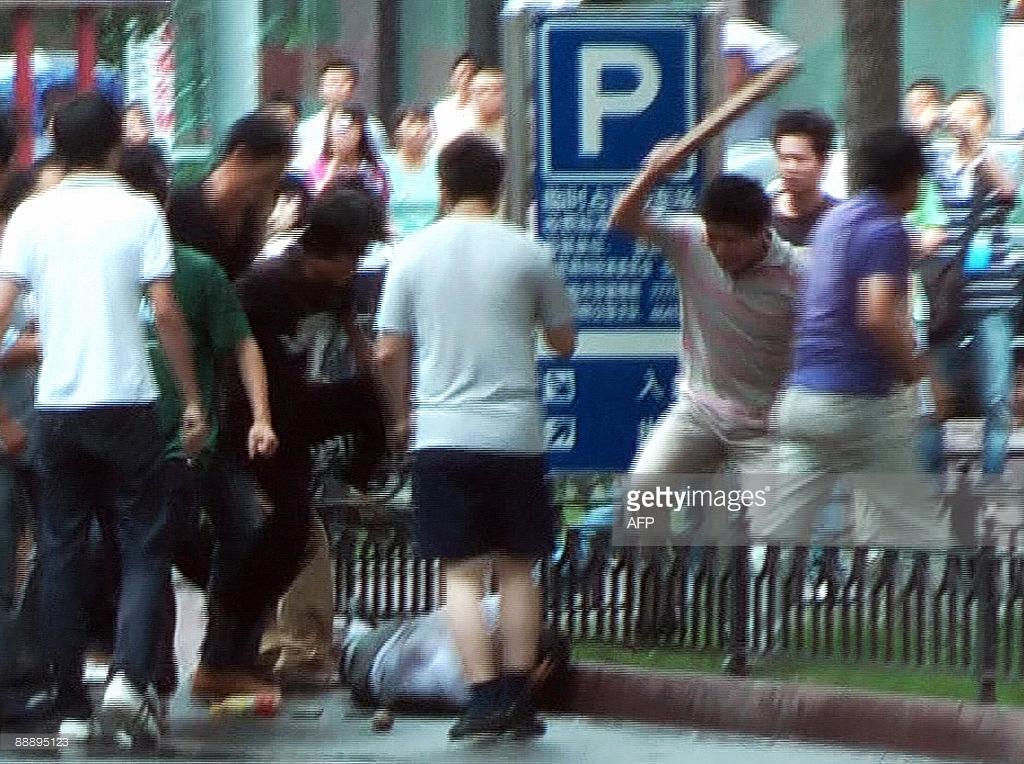
Han Chinese mobs attack Uyghur Muslim
At the encouragement of the Chinese government, thousands of Chinese migrants marched on the streets of Urumqi city between September 3- 4, 2009 to demand government action over bizarre syringe attacks blamed on the Uyghur people.
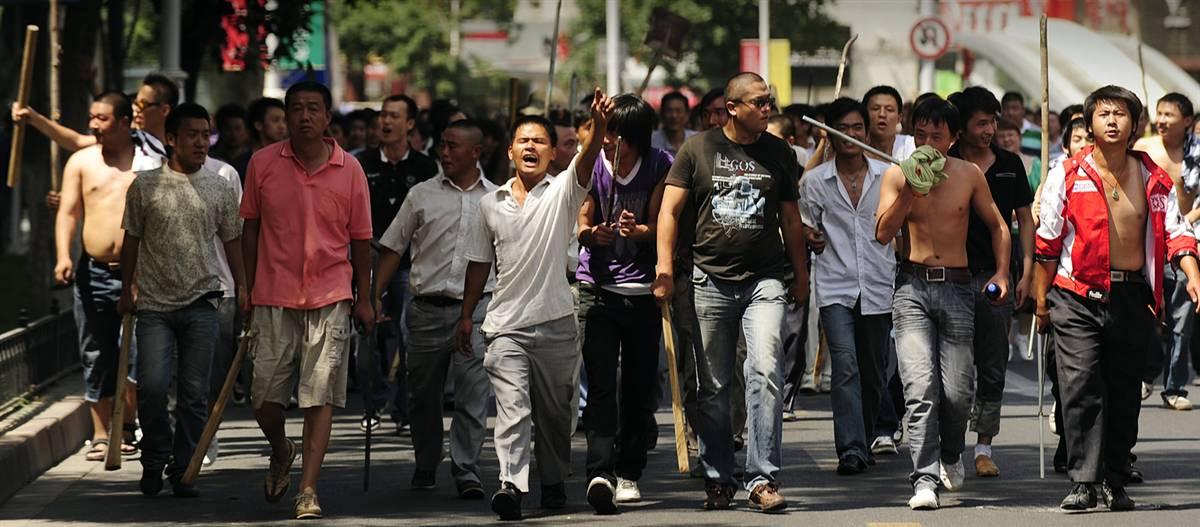
Han Chinese mobs in Urumqi streets
The Chinese migrants attacked any Uyghur people they could see in the streets, injuring and killing people. According to available Uyghur information, the protesters killed over 30 Uyghur people.
